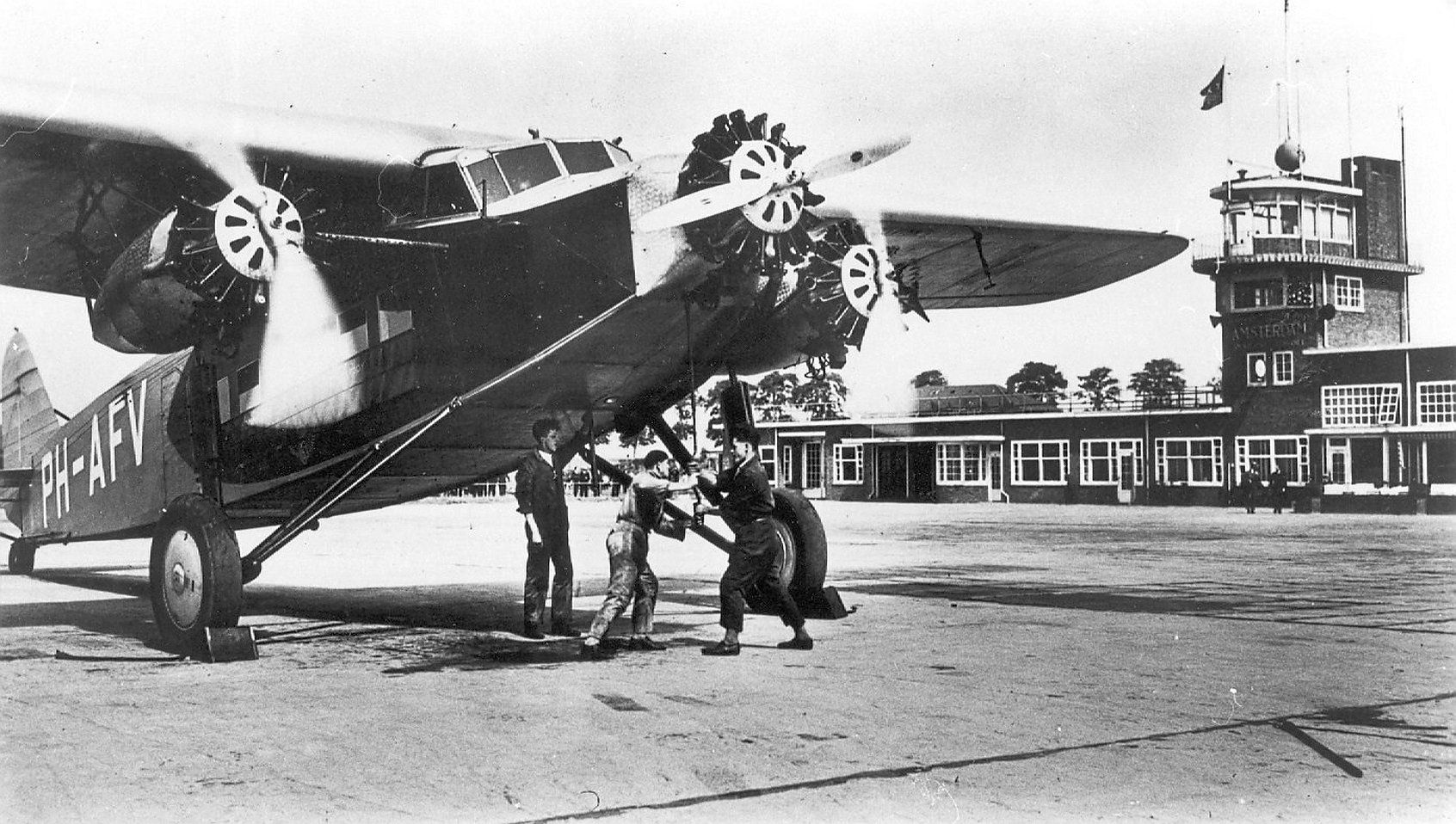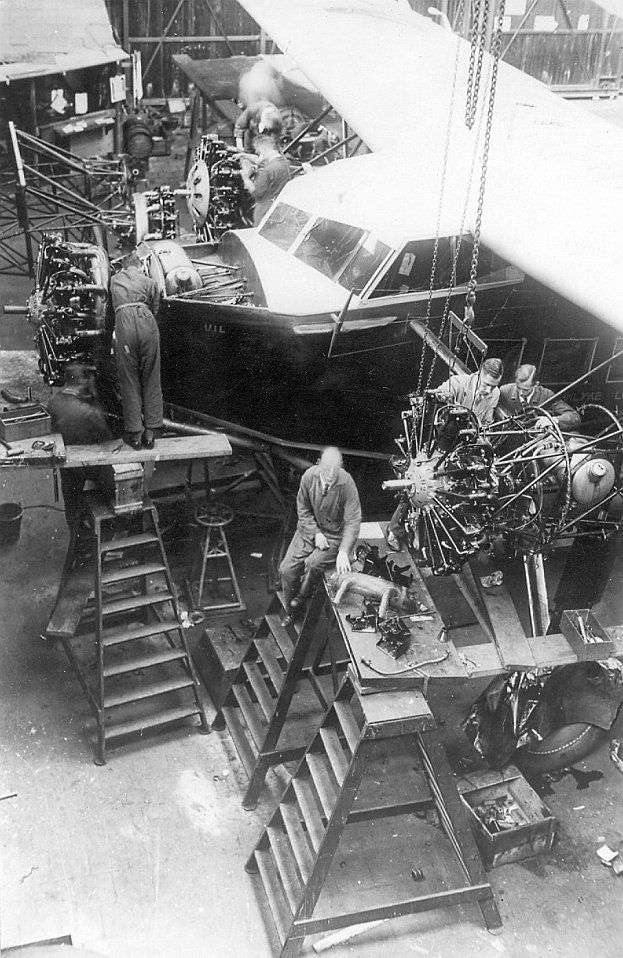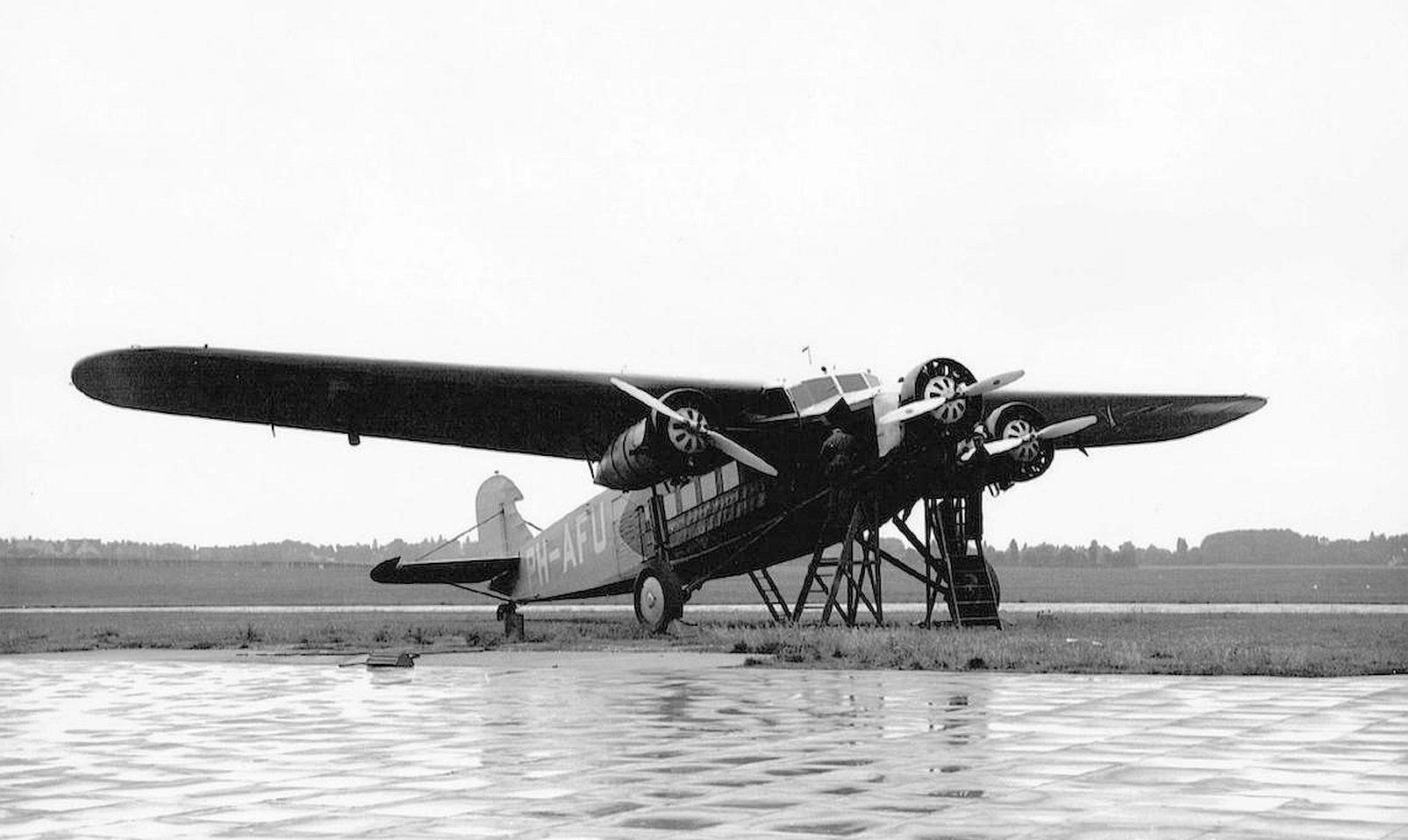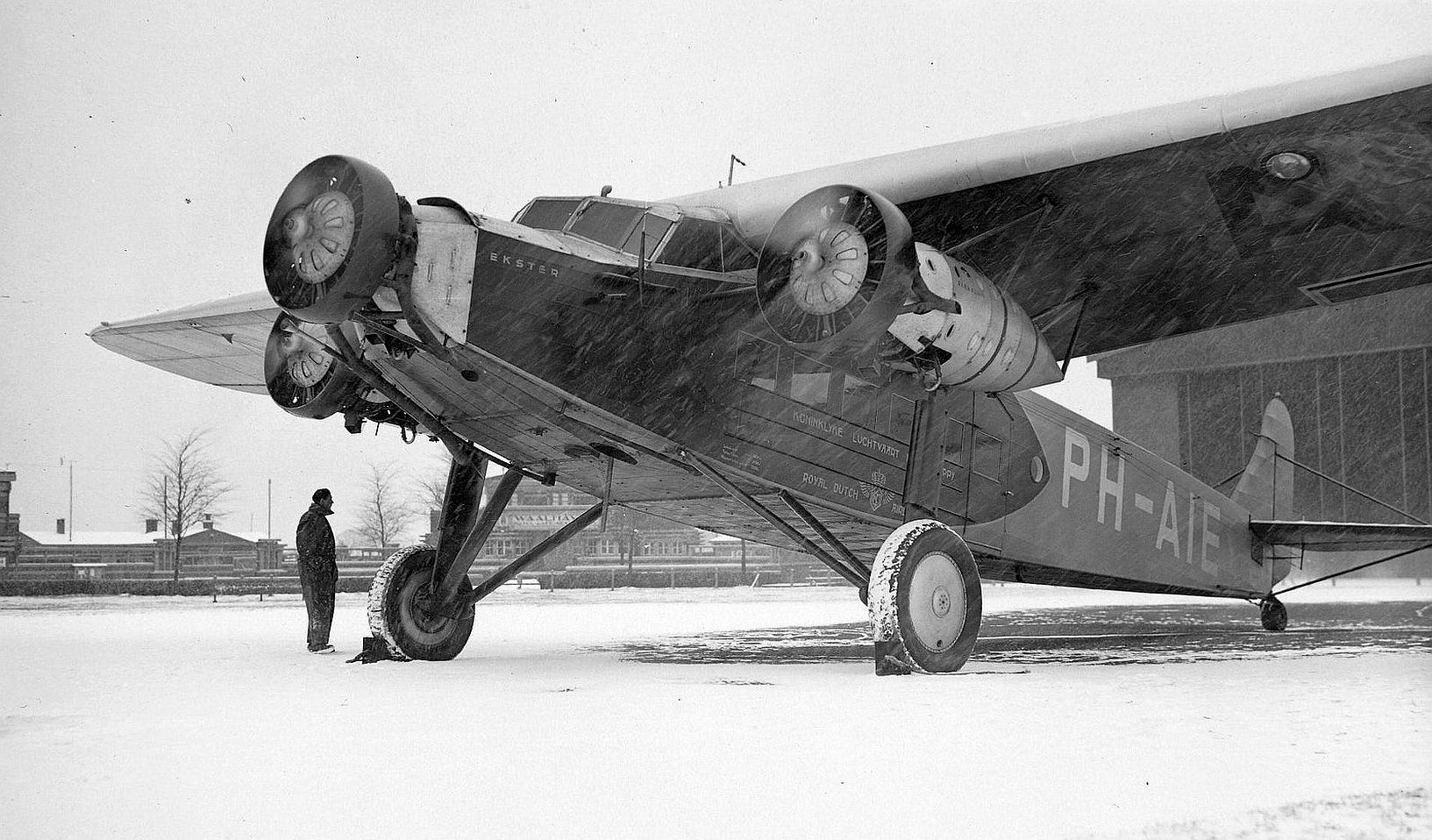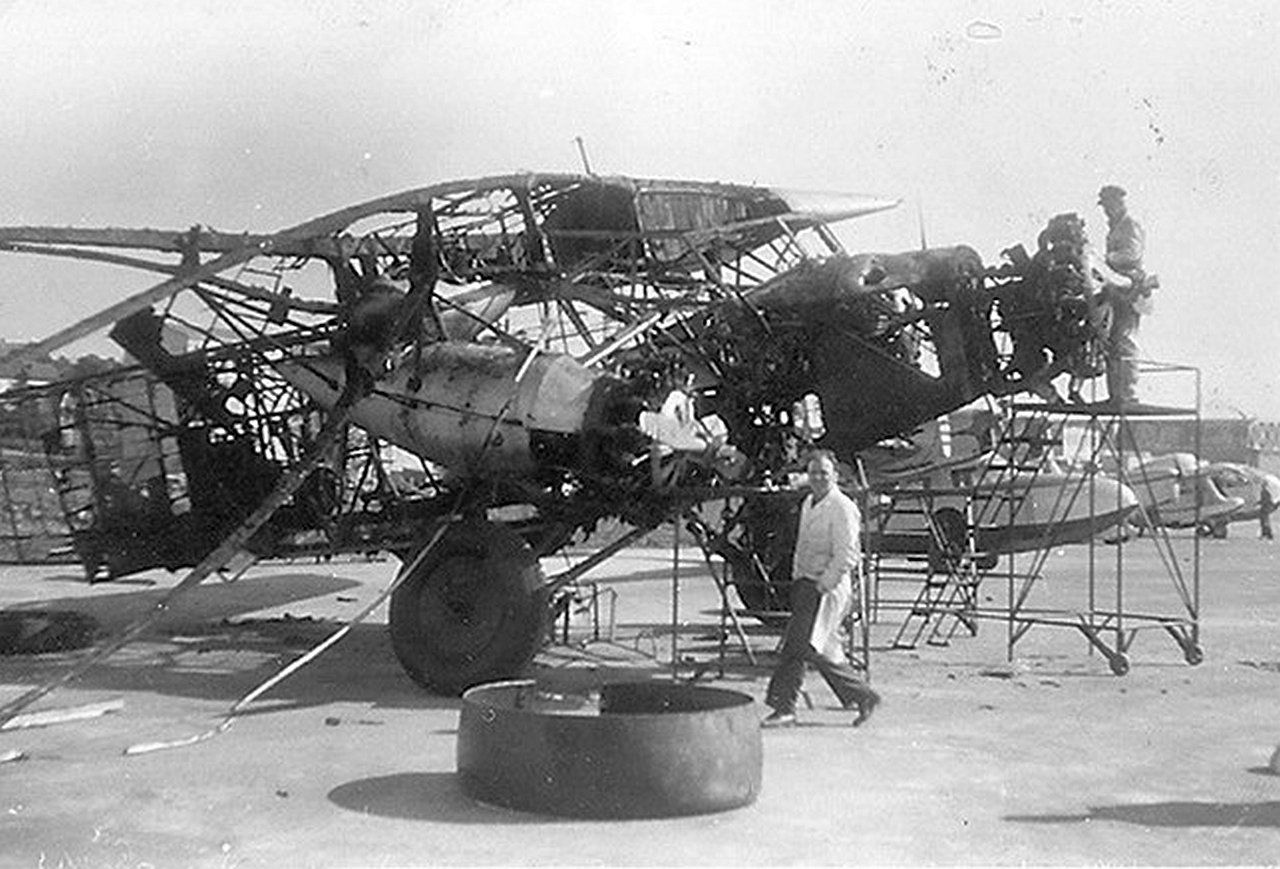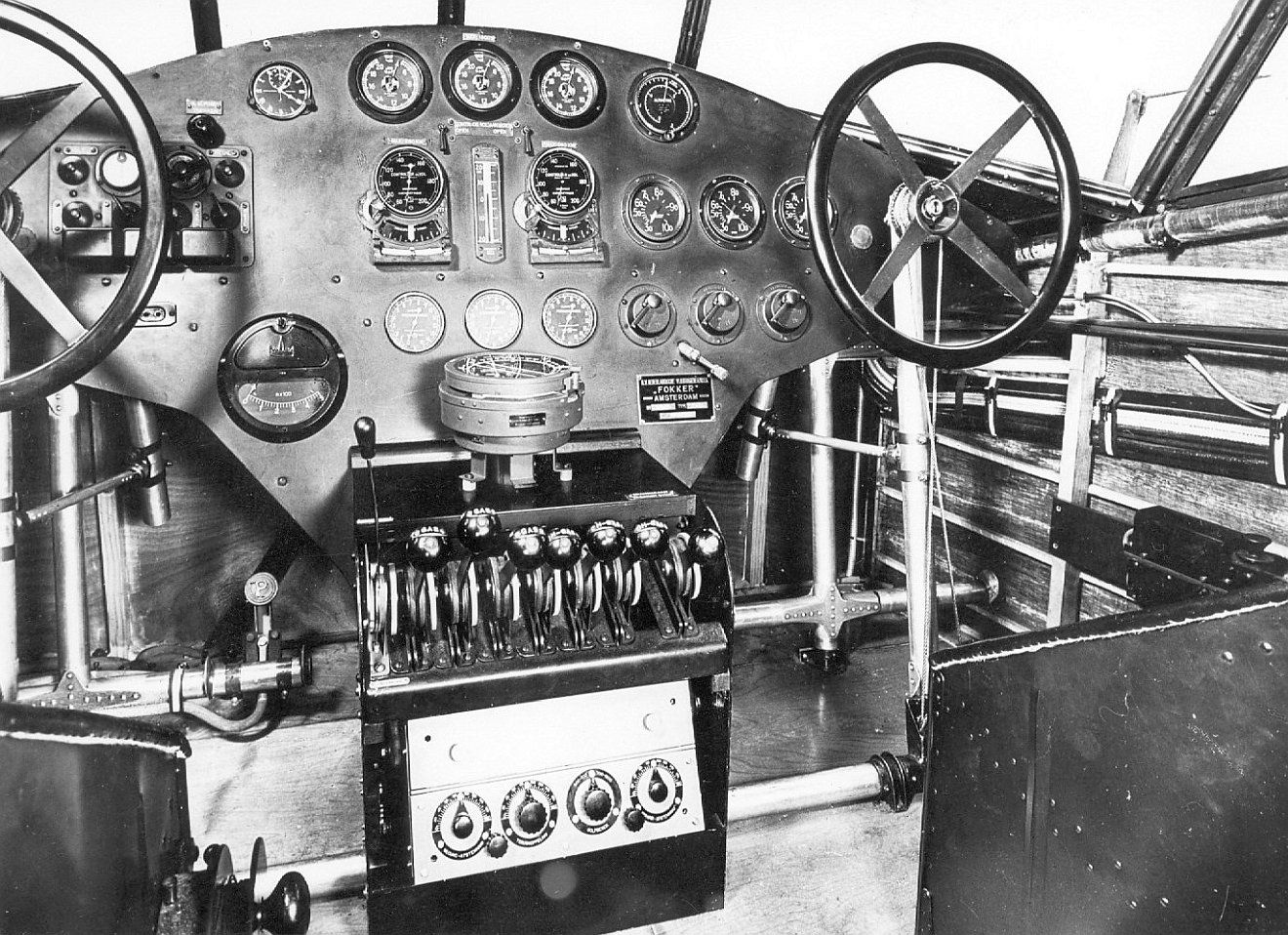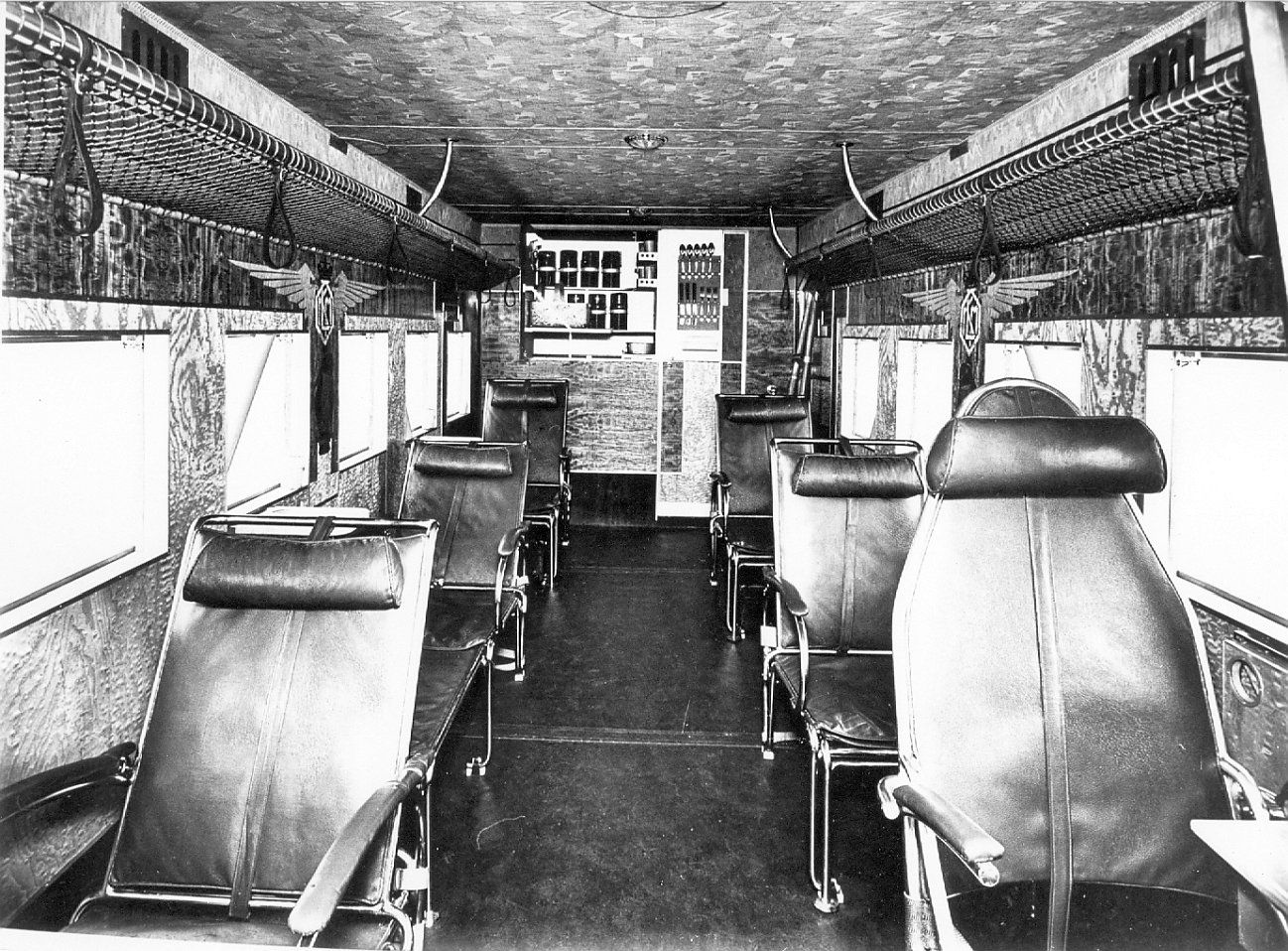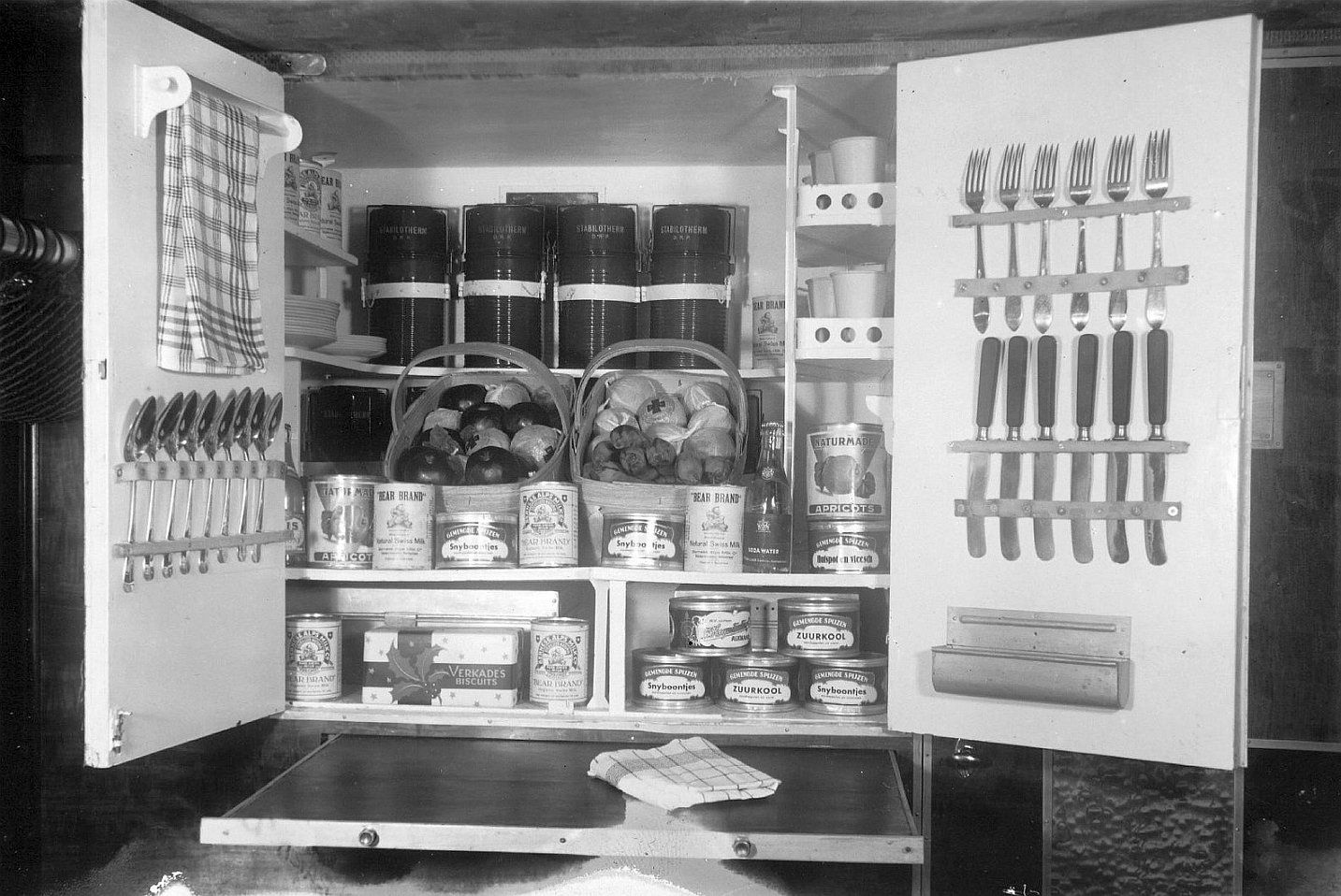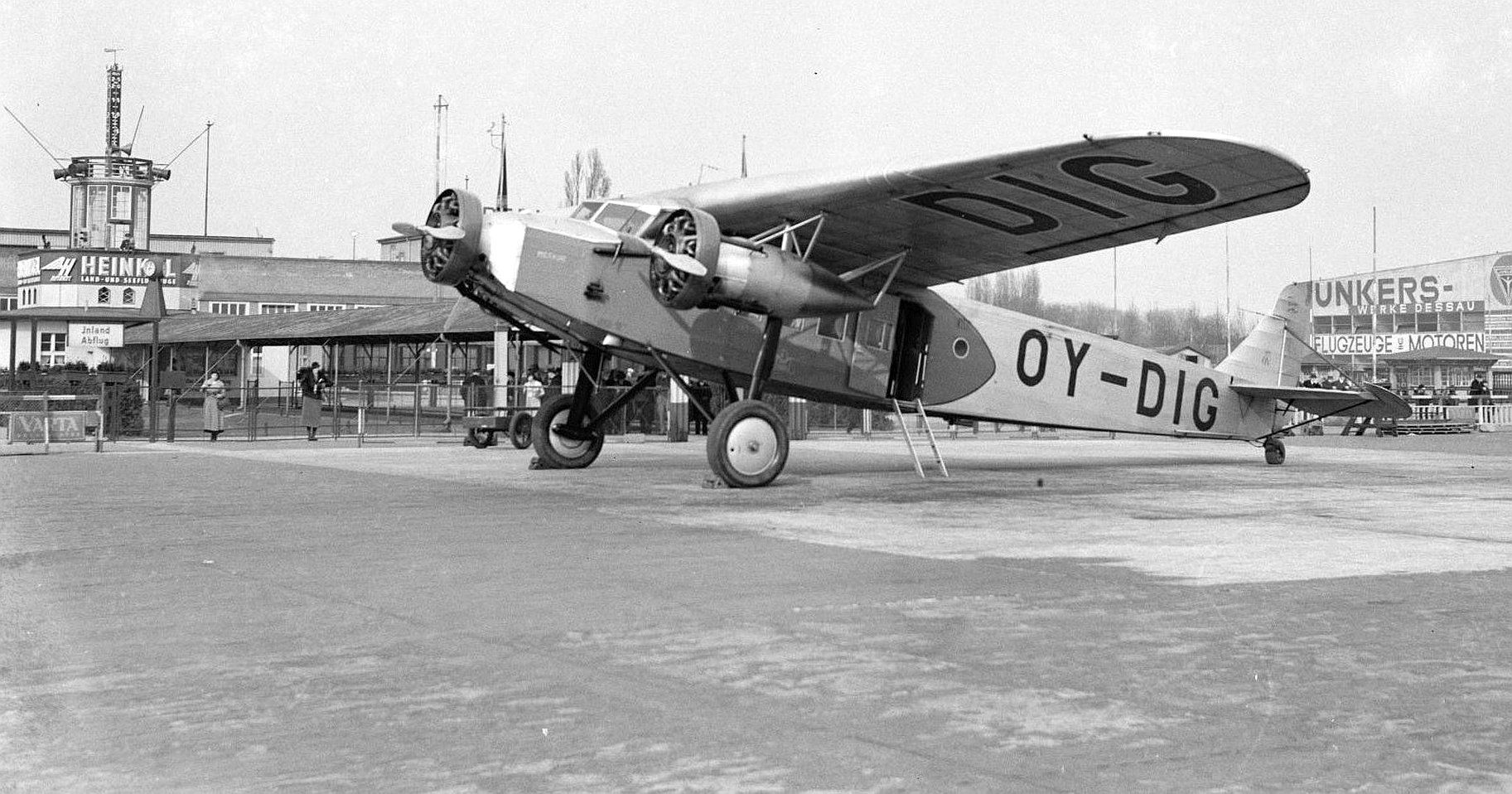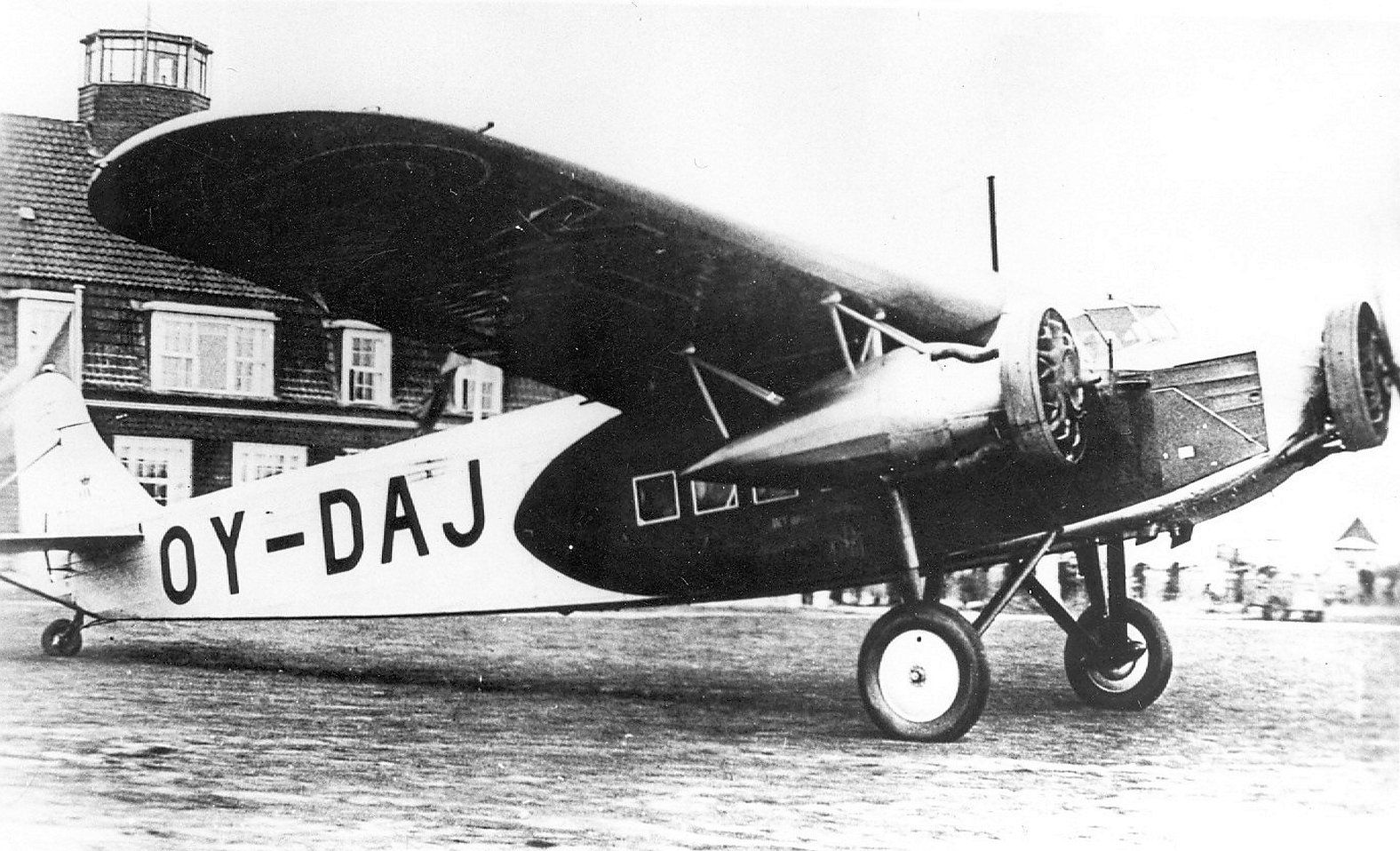Fokker F.XII
The 3-engine F.XII was developed and built in 1930 at KLM's request for use on the route to the Dutch East Indies with a capacity of between 10 and 18 passengers.
Eventually the aircraft was equipped with space for 16 passengers, on the Indies route the aircraft was equipped with 4 to 6 comfortable seats that could be converted to a bed.
The F.XII has a wingspan of 23 meters and a fuselage length of 17.5 meters and is equipped with 425 Hp Pratt & Whitney Wasp engines. The prototype made its first flight on December 5th, 1930.
KLM ordered 8 aircraft, the first of which made its first passenger flight on March 5th, 1931 with KLM president Albert Plesman on board to Batavia in the Dutch East Indies.
KLM flew the F.XII to Batavia twice a week. The flight took an average of 80 hours spread over 10 days. At that time it was known as the longest passenger flight in the world.
The crew consisted of two pilots, two mechanics and one or two radio operators
In addition to normal passenger flights, the F.XII’s were also regularly used for charter flights by KLM.
After their KLM careers, a number of F.XII’s went to other operators, in England and Spain, among others.
The Spanish Nationalists converted two F.XII’s into bombers, another two went to the KNILM, KLM's Dutch East Indian subsidiary.
One aircraft went to Sweden and the Swedes built two themselves under license at Orlogsvaerftet.
Click on the photo to enlarge the photo



